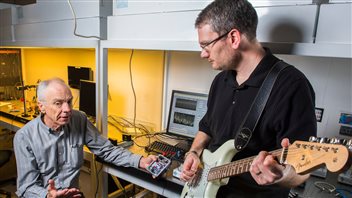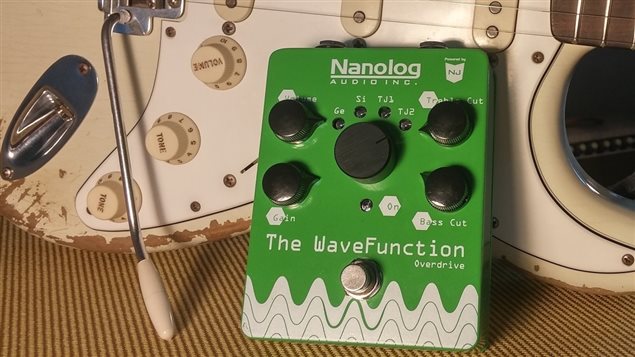All recorded music passes through various processing to get differing sounds and sound qualities.
Modern electronic processing and consumer electronics involves silicon chips, (transistors, and diodes) and guitar players say that doesn’t necessarily provide a nice sound, which is why many prefer “old school” tube amplifiers and processing when possible.
Now researchers in Canada have used molecules to replace silicon to create smoother warmer sounds, or the overdrive sound rock guitarists often seek.
Richard McCreery (PhD) is a chemistry professor and senior researcher at the National Institute for Nanotechnology (NINT) at the University of Alberta and research officer for the National Research Council of Canada
Listen
Professor McCreery and research colleague and guitarist/senior NINT researcher Adam Bergren were studying applications for nano technology in moving electrons through molecules as elements in circuits.
Molecular electronics has been known since the 1990’s but the duo sought a practical application, the first practical marketable application ever in fact, the result being a guitar pedal. These are used by guitarists to alter the sound created, also known as “effects”.
The researchers note that running the sound through silicon processing creates a “sterile” sound without the rich harmonics that come with running through non-linear devices like tubes which are expensive, fragile, and have a limited service life.
The nano technology using a layer only a couple of molecules in thickness between two conducting materials recreates that non-linear sound by altering the electronic signal and wave structure.
The first practical nano-product
McCreery and Bergren note that molecular electronics to date have been fragile and difficult to scale up to practical manufacturing levels. What they have developed is a robust technology with which they’ve created an actual practical marketable technology and products.
McCreery says it’s a demonstration the molecular electronics can be made stable and reliable for applications in the real world, not just as lab curiousities.
They also note that silicon has a limited range of electronic properties, while molecular electronics can use a wide variety of molecular structures to produce desirable and often unusual electronic behaviours. In the guitar example, a simple change of molecular length causes very different “sounds”.
They have created a company, Nanolog Audio to market their products noting that there are likely many many other possibilities for the technology beyond audio where nano-tech may provide advantages of less electrical consumption and less heat generation.







For reasons beyond our control, and for an undetermined period of time, our comment section is now closed. However, our social networks remain open to your contributions.